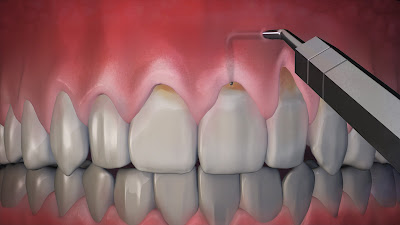Introduction:
Maintaining good oral health is crucial for a confident
smile and overall well-being. However, gum recession is a common dental issue
that can affect anyone. When the gum tissue encircling the teeth begins to
recede, the tooth roots become exposed and more susceptible to dental issues.
This condition is known as gum recession. Fortunately, effective treatment
options are available to address gum recession and restore your health. This
article will explore some of the most reliable and proven gum recession treatments.
I. Understanding Gum Recession:
Before delving into the treatments, it's essential to
understand the causes and symptoms of gum recession. Several things can lead to
gum recession, including:
·
Periodontal
Disease: Poor oral hygiene and bacterial infections can lead to gum
disease, a major cause of gum recession.
·
Brushing
Technique: Aggressive brushing or using a hard-bristled toothbrush can
cause gum tissue to recede over time.
·
Genetics:
Some individuals may be more prone to gum recession due to their genetic
makeup.
·
Hormonal Changes: Hormonal fluctuations, such as
during pregnancy or menopause, can increase the risk of gum recession.
·
Tobacco
Use: Smoking or chewing tobacco can negatively impact gum health and
contribute to gum recession.
Common symptoms of gum recession include tooth sensitivity,
toothache, visible tooth roots, bleeding gums, and changes in the appearance of
your smile.
II. Non-Surgical Gum Recession Treatments:
·
Dental
Cleaning: Professional dental cleanings by a dental hygienist can remove
plaque and tartar buildup, which can contribute to gum recession. Regular
cleanings are vital for maintaining healthy gums and preventing further
recession.
·
Scaling
and Root Planing: Scaling and root planing, a deep cleaning technique, may
be advised in mild to moderate gum disease cases. This treatment involves
removing plaque and tartar from below the gum line and smoothing the tooth
roots to encourage gum reattachment.
·
Antibiotics:
In some cases, antibiotics may be prescribed to control bacterial infection and
promote gum healing.
III. Surgical Gum Recession Treatments:
Gum Grafting: In
this surgery, the gum tissue is taken from another part of your mouth or from a
donation source and attached to the area where your gums are receding. Gum
grafting helps cover the exposed tooth roots and restore gum tissue.
Pinhole Surgical
Technique: This minimally invasive procedure involves creating small holes
in the gum tissue and gently repositioning it to cover the exposed tooth roots.
It requires no cutting or sutures, resulting in faster healing and minimal
discomfort.
Regenerative
Procedures: In severe cases of gum recession, regenerative techniques such
as bone grafts or tissue-stimulating proteins may be utilized to encourage the
regeneration of lost gum tissue and bone.
IV. Aftercare and Maintenance:
After undergoing gum recession
treatment, proper aftercare is crucial to maintain optimal gum health.
This includes:
·
Following a good oral hygiene routine, including
brushing twice a day with a soft-bristled toothbrush and using fluoride
toothpaste.
·
Daily flossing to get rid of plaque and other
particles stuck between teeth and along the gumline.
·
Regular dental check-ups to monitor your gum
health and address any concerns promptly.
·
Quitting smoking or tobacco use promotes oral
health and prevents further gum recession.
Conclusion:
Gum recession can be upsetting, but with the right treatment
plan, you can get your gums healthy again and smile with confidence again.
Whether through non-surgical or surgical methods, the treatments discussed
above provide effective solutions for gum recession. Remember, early detection
and timely intervention are key to preventing further damage. To choose the
best course of action for your particular situation, consult your dentist. By
taking proactive steps and seeking professional dental care, you can ensure a
successful gum recession treatment and maintain a healthy smile for years.
Always consult your dentist or periodontist to determine the
most appropriate treatment plan for your needs. With the right approach, gum
recession can be effectively addressed, allowing you to enjoy a beautiful smile
and optimal oral health.

Comments
Post a Comment